When will your Pixel phone stop receiving updates?
Here's everything you need to know about software updates on your Pixel.

Google is finally seeing decent sales momentum with its Pixel devices, and it isn't hard to see why — the Pixel 8a continues to be the best mid-range phone you can buy today, and the Pixel 9 series has the best AI utilities currently available. Google's software efforts continue to stand out; Pixels have a clean interface with bold Material You styling, and they receive updates ahead of any other Android device.
What I like about the software on Pixel phones is that it is uncluttered, and you don't get any bloatware whatsoever. That in itself is a big deal, and it's one of the main reasons why I usually switch back to a Pixel after I'm done reviewing the latest phones.
Another thing Google changed recently is long-term update guarantee; starting with the Pixel 8 series, all Pixel phones will get seven years of Android OS updates, and that includes the Pixel 8a as well. More recently, Google extended the update guarantee for some of its older phones, including the Pixel 7 and Pixel 6 series.
In addition to the yearly Android OS update, Google rolls out monthly security updates to all eligible Pixels, and you get regular Feature Drops that introduce exciting new features. Eligible Pixels picked up the stable Android 15 update as soon as it became available in mid-October 2024, and with Android 16 coming earlier than ever before in 2025, devices that are slated to get the update will pick it up as soon as it goes live in Q2 2025.
So here's a rundown of how many Android OS and security updates your Pixel phone will receive, and when you might want to consider upgrading.
Pixel 9, Pixel 9 Pro, 9 Pro XL, and Pixel 9 Pro Fold

The latest Pixels made their debut in August 2024, and they came with Android 14 out of the box. The Android 15 update is now available to these phones, and all four devices will get seven years of guaranteed Android OS updates and security patches. What that means is that the Pixel 9, Pixel 9 Pro, Pixel 9 Pro XL, and Pixel 9 Pro Fold will get Android OS updates and security patches at least until August 2031.
Although Google doesn't detail how long Feature Drops will be available, it's a good bet that those updates will also likely continue until 2031. It's another matter as to whether these phones are actually usable by then — the Tensor G4 isn't particularly fast today — but what you need to know is that all four phones will get guaranteed updates until August 2031, and that's a big deal.
Be an expert in 5 minutes
Get the latest news from Android Central, your trusted companion in the world of Android
Pixel 8 and Pixel 8 Pro

The Pixel 8 and Pixel 8 Pro became available in October 2023, and both phones ran Android 14 out of the box and have picked up the Android 15 update. This launch was momentous from a software point of view as these devices became the first from Google to be eligible to get long-term software updates. As such, both the Pixel 8 and Pixel 8 Pro will get seven years of Android OS updates and security patches.
Both phones will get guaranteed platform and security updates at least until October 2030, so you don't have anything to worry about in this regard. The way I see it, the Tensor G3 platform powering both phones is the bottleneck; while these devices will get software updates until the end of the decade, Google has a sizeable task optimizing the hardware so that future Android versions run smoothly.
Pixel 8a

The Pixel 8a is about as straightforward a recommendation as any on this list. The device has the same Tensor G3 chip as the regular Pixel 8, and it has a 120Hz panel and decent battery life. The best part is that it will also get the same seven-year update guarantee as the rest of the Pixel 8 series, and that's unheard of in the mid-range segment.
As the Pixel 8a was unveiled in May 2031, it will get guaranteed Android OS and security updates at least until May 2031. The phone came with Android 14 out of the box, and the Android 15 update is available to the device.
Pixel 7 and Pixel 7 Pro

The Pixel 7 and Pixel 7 Pro debuted in October 2022 with Android 13 out of the box, and they've picked up the Android 15 update. The phones hold up incredibly well two years after launch, and Google recently extended the guaranteed software support for these devices.
Originally, Google only guaranteed Android OS updates until October 2025, and security patches for an additional two years beyond that, until October 2027. Now, the Pixel 7 and Pixel 7 Pro will get both Android OS and security updates until October 2027. That means we can expect the Pixel 7 series to get the platform updates to Android 16, Android 17, and Android 18.
Pixel 7a and Pixel Fold
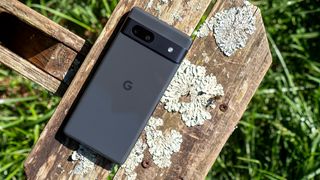
Like the Pixel 8a, the Pixel 7a is a great mid-ranger, and while I didn't like the fact that the phone came with a 90Hz OLED panel, that's about the only shortcoming. The phone launched in May 2023 with Android 13 out of the box, and it picked up the stable Android 15 update. Similar to the regular Pixel 7, the Pixel 7a will now get five platform updates and five years of security patches.
So it will get guaranteed Android OS updates and security updates until May 2028. Interestingly, the accelerated timeline of Android releases means it is likely that the Pixel 7a will get the boost to Android 16, Android 17, and Android 18 — and maybe Android 19.

The original Pixel Fold, released in June 2023, is in the same boat, receiving five years of Android OS updates and security patches until June 2028.
Pixel 6 and Pixel 6 Pro
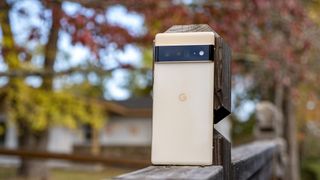
Google unveiled the Pixel 6 and Pixel 6 Pro back in October 2021, with both phones coming with Android 12 out of the box. Similar to the Pixel 7, both the Pixel 6 and 6 Pro were originally guaranteed three Android OS updates along with five years of security updates. Now, the Pixel 6 and Pixel 6 Pro will get five years of Android OS updates and security patches.
And ICYMI, #PixelFold along with #Pixel6 and #Pixel7 generation users will now get two additional years of OS updates! This extended support will total five years starting from when the device first became available on the Google Store in the US: https://t.co/Y50A92TiqCDecember 5, 2024
Initially, the Android 15 update that rolled out to these devices in October 2024 was expected to be the last platform update. However, the phones will now receive Android 16 and Android 17, at least.
Pixel 6a

The Pixel 6a gained a lot of attention when it debuted in July 2022, and that's because it had the same Tensor platform as the regular Pixel 6 series. While I enjoyed using the device, I didn't like the fact that it came with a 60Hz panel — that made it feel slow.
The Pixel 6a came with Android 12 out of the box, and it made the switch to Android 15. With Google offering the same prolonged update guarantee, the phone will get Android OS updates and security updates until July 2027. That means the aging midranger will get upgraded to Android 16 and Android 17.
Pixel 5 and Pixel 5a
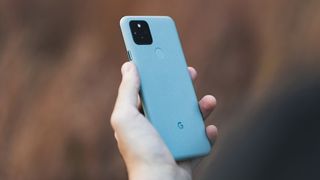
The Pixel 5 debuted in October 2020 with Android 11 out of the box, and with Google guaranteeing three Android OS updates, the Android 14 update that rolled out last year was the last platform version available to the device. It won't make the switch to Android 15, nor will it get any new security updates — Google only guaranteed three years of security updates until the Pixel 5 series.
That said, the Pixel 5 was the last Google device that came with unlimited Google Photos storage — provided you used the storage saver tier. This was a big deal at the time, and it's annoying that Google doesn't offer the feature any longer on its devices.
The Pixel 5a came much later — it went on sale in August 2021 — and it ran Android 11 out of the box. Similar to the regular model, the Android 14 update was the platform update, and it isn't picking up any new Android updates or security patches.
Pixel 4a and Pixel 4a 5G
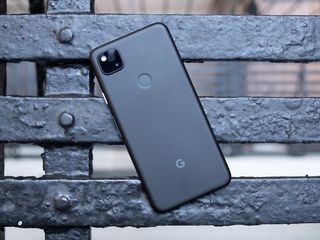
The Pixel 4a was announced in August 2020 with Android 10 out of the box, and it picked up the Android 13 update two years ago. Like other Pixel devices at the time, it was eligible to get three Android OS as well as security updates, and those have been delivered.
The Pixel 4a 5G debuted alongside the Pixel 5, and went on sale in November 2020. As a result of later availability, it came with Android 11 out of the box, and made the switch to Android 14 last year.
Pixel 4 and Pixel 4 XL
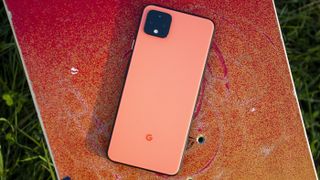
Although the hardware wasn't quite the best, I have good memories of using the Pixel 4 XL. The phone's unique radar-based face recognition tech — powered by a set of sensors dubbed Soli — relied on the 60Hz frequency, making it ineligible to be released in countries like India, where the band is used by the government.
Both the Pixel 4 and 4 XL launched in October 2019 with Android 10, and came with three years of guaranteed OS and security updates — the Android 13 update that rolled out two years ago is the last platform build they received.
Pixel 3a and Pixel 3a XL
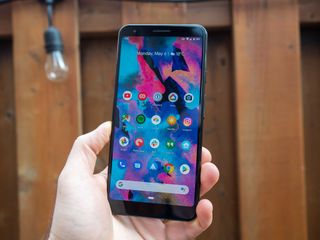
While Google had been making phones for over three years by this point, the Pixel 3a and 3a XL allowed the brand to break into the mainstream market. Their value-focused pricing made the devices stand out, and although the hardware was underwhelming, you still got great cameras and clean software.
The Pixel 3a and 3a XL debuted in May 2019 with Android 9.0 Pie, and they picked up their requisite three Android OS updates, bringing them both to Android 12.
Pixel 3 and Pixel 3 XL
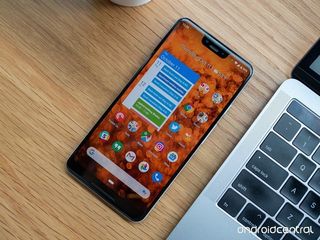
The Pixel 3 XL has the distinction of being the ugliest Pixel thanks to its dual front cameras, and while I got great photos out of the device, it was also fragile — a single tumble broke the back cover. The devices were unveiled in October 2018 with Android 9.0 Pie out of the box, and picked up Android 12 three years ago.
While they're not receiving updates, they're still quite usable, and the Snapdragon 845 holds up well in day-to-day tasks.
Pixel 2 and Pixel 2 XL
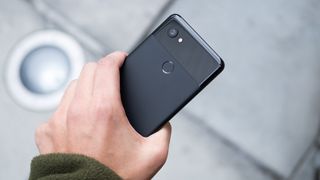
I used all the Pixels released by Google, and the Panda Pixel 2 XL will go down as one of the most memorable. The distinctive two-tone design and fantastic cameras gave the phone a clear edge against its rivals, and while Google bungled the OLED panel — it had significant issues with color balance — it didn't matter.
The Pixel 2 and 2 XL debuted in October 2017 with Android 8.0 Oreo, and like other devices at the time, they got three guaranteed Android OS updates and security patches, with Android 11 being the last one in 2020.
Pixel and Pixel XL
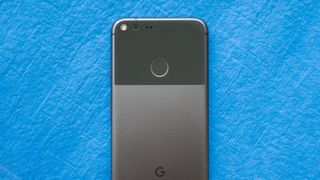
The Google phones that started it all still have a unique attribute: they include unlimited Google Photos storage in original quality. Google didn't set a time limit on this feature, so if you have a Pixel lying around, you can still back up photos to Google Photos and not have it count toward your storage quota.
Both phones debuted in October 2016 with Android 7.1 Nougat out of the box, and picked up their last platform update in October 2019 (Android 10).

If you need to upgrade and want a new phone, my suggestion is the Pixel 9 Pro. It is easier to hold and use than the 9 Pro XL, and you get the same set of cameras at the back.

If you're after the best value, the Pixel 8a is still the device to beat right now. It delivers the best cameras in this category, and with seven guaranteed Android OS updates, it will pick up more software updates than any other mid-range phone.

Harish Jonnalagadda is Android Central's Senior Editor of Asia. In his current role, he oversees the site's coverage of Chinese phone brands, networking products, and AV gear. He has been testing phones for over a decade, and has extensive experience in mobile hardware and the global semiconductor industry. Contact him on Twitter at @chunkynerd.
- Brady SnyderContributor